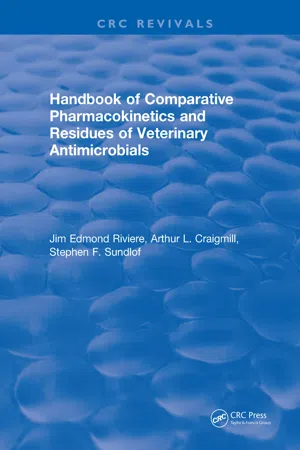FOREWORD
Human food safety is the foremost consideration in food animal produc tion. This consideration supercedes even the obvious importance of economic factors in food animal production. Food products are mandated by federal regulation to be wholesome and safe for the consumer. The Center for Veterinary Medicine (CVM) of the Food and Drug Administration (FDA) and the Food Safety Inspection Service (FSIS) of the U.S. Department of Agriculture (USDA) are charged with the responsibility of ensuring that human food safety standards are maintained.
Drugs are used in food-producing animals for production purposes and for the treatment of disease. Food animals can be exposed to environmental xenobiotics. Thus, the potential for residues of these substances exists. USDA/FSIS is responsible for monitoring food products for residues of these materials in food products.
In 1982, USDA/FSIS, together with the USDA Extension Service (ES), established the Residue Avoidance Program (RAP). RAP entered into a cooperative agreement with North Carolina State University, Raleigh, the University of California at Davis, and the University of Florida. Gainesville, to develop a computer-based system which would provide readily accessible information on drugs, pesticides. and environmental contaminants having potential to cause residues in food animal tissues. This system is known as the Food Animal Residue Avoidance Databank (FARAD).
Drs. Jim E. Riviere, Arthur L. Craigmill, and Stephen F. Sundlof have developed the most comprehensive source of pharmacokinetic information available on drugs and xenobiotics in food-producing animals. This informa tion, constantly updated, is available to veterinarians through regional access centers for the purpose of preventing residue-contaminated animals and animal products from entering the human food supply. The data base is maintained at North Carolina State University, which is the site where all of the pharmacokinetic analyses are performed and the computer software is written.
Information contained in FARAD proved to be most helpful in managing an extensive residue problem associated with food animals ingesting feed contaminated with heptachlor in the Midwest during 1986. It was possible to make informed decisions, based on toxicokinetic analyses, about the eco nomic feasibility of withholding contaminated livestock and milk from the market until concentrations of heptachlor fell below tolerance concentra tions.
Because of the large number of inquiries into the system, the idea originated that a hard copy version of the pharmacokinetic data would be useful toothers without having toaccess FARAD itself. This is especially true for researchers to whom access to these data will be invaluable and to those persons outside the U.S. who do not have access to FARAD. The result is the present handbook.
Arthur L. Aronson
Professor and Head Department of Anatomy, Physiological Sciences, and Radiology
College of Veterinary Medicine
North Carolina State University Raleigh. North Carolina
PREFACE
Residues of drugs and chemicals in the edible tissues of food-producing animals are a major public health concern today. In order to address this contamination problem in the field and design research studies to help eliminate it, a knowledge of drug and xenobiotic pharmacokinetics is essen tial. This handbook presents a convenient and concise compilation of infor mation pertinent to the application of pharmacokinetic principles to drug and chemical residue avoidance in the edible tissue and products of animal origin. The information presented will be of use to veterinarians, toxicologists, phar macologists, animal scientists, food hygientists, and regulatory personnel involved in human food safety.
Included in this and the two companion handbooks which follow are data on therapeutic agents, pesticides, growth promotants, and environmental contaminants to which livestock are often exposed and which may result in food-borne residues. The information is conveniently categorized into four classes: physiochemical constants, U.S. Food and Drug Administration approved preslaughter withdrawal and milk discard times, legal tissue toler ances. and pharmacokinetic parameters derived from the open literature. This is the only publication in which all of this information is available in a single source. Most of the pharmacokinetic parameters in these volumes have never been published because the values are a result of statistical analyses per formed by the authors on time/concentration data tabulated in the pimary sources.
The original impetus for compiling the information contained in these handbooks was the need to develop a central source of those elements pertinent to residue avoidance. Under the auspices of the U.S. Department of Agriculture Residue Avoidance Program, the authors established the Food Animal Residue Avoidance Databank (FARAD), a computerized databank of regulatory, pharmacologic, and educational information useful for mitigation of drug and chemical residue problems in food-producing animals. These handbooks are a direct outgrowth of this endeavor.
The authors have made every effort to include most of the data available to them in the open literature; however, it was impossible to include informa tion from every article ever published in this field. W...
